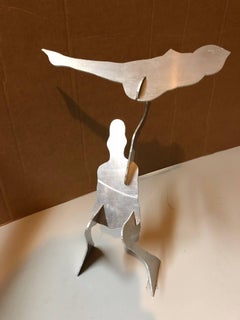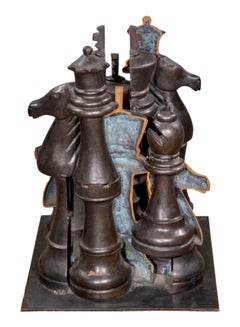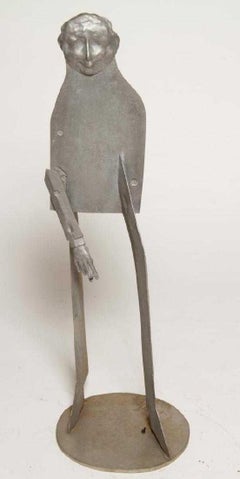William King (b.1925) Abstract Sculptures
American artist William King was best known for his comedic sculptures — working in clay and a range of metals, he created a wide variety of toy-like figures over the years that were cartoonish in their contorted forms and unlikely poses. King emphasized posture and body language in his art and poked fun at societal conventions as well as how we navigate the trials of our daily lives in a cheerful, clever manner.
Born in Jacksonville, Florida, King grew up in Coconut Grove, a historic Miami neighborhood. He studied at the University of Florida and later moved to New York City, finishing his studies at the Cooper Union in the late 1940s. King subsequently traveled to Rome on a Fulbright scholarship and explored the arts of Europe, including in London and Athens. In 1953, after returning to the United States, he began teaching at the Brooklyn Museum Art School.
In 1954, King had his first solo show at Alan Gallery in New York and continued to exhibit in and around the city until 2014. He worked across a wide variety of media, most frequently metal, such as bronze, aluminum and steel of varying finishes. His more serious pieces saw an integration of darker materials with rougher textures to amplify his figures' reflective, dismayed or generally somber expressions.
King received numerous awards for his work, including acknowledgments from the Guggenheim Foundation, National Endowment for the Arts and the San Francisco Arts Commission, as well as an honorary doctorate from the San Francisco Art Institute.
Find original William King figurative sculptures, abstract sculptures and prints on 1stDibs.
1970s American Modern William King (b.1925) Abstract Sculptures
Metal
Mid-20th Century Abstract William King (b.1925) Abstract Sculptures
Bronze
1970s Modern William King (b.1925) Abstract Sculptures
Bronze
Early 2000s Abstract William King (b.1925) Abstract Sculptures
Bronze
1950s Modern William King (b.1925) Abstract Sculptures
Bronze
Mid-20th Century Modern William King (b.1925) Abstract Sculptures
Bronze
21st Century and Contemporary Abstract William King (b.1925) Abstract Sculptures
Bronze
1970s Modern William King (b.1925) Abstract Sculptures
Bronze
Late 20th Century Modern William King (b.1925) Abstract Sculptures
Bronze
21st Century and Contemporary Abstract William King (b.1925) Abstract Sculptures
Bronze
1960s Modern William King (b.1925) Abstract Sculptures
Metal
21st Century and Contemporary Abstract Expressionist William King (b.1925) Abstract Sculptures
Marble, Bronze
1960s Modern William King (b.1925) Abstract Sculptures
Metal
20th Century Abstract William King (b.1925) Abstract Sculptures
Bronze
1960s Pop Art William King (b.1925) Abstract Sculptures
Bronze
1960s Pop Art William King (b.1925) Abstract Sculptures
Metal
1970s American Modern William King (b.1925) Abstract Sculptures
Metal





